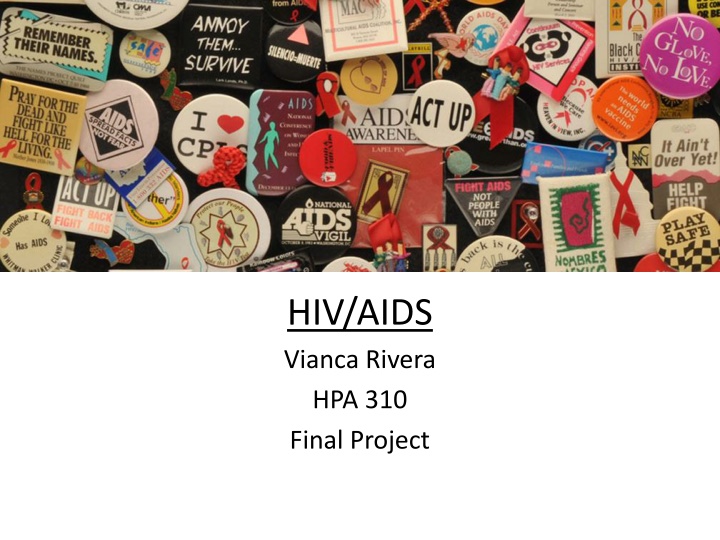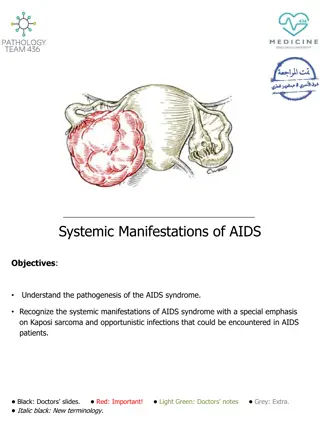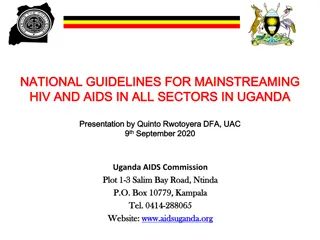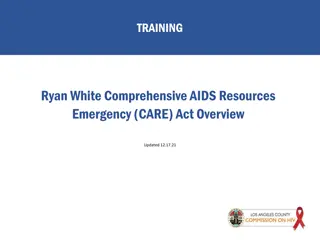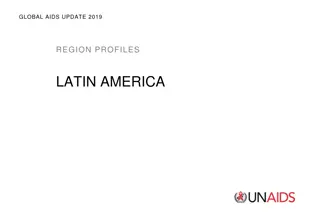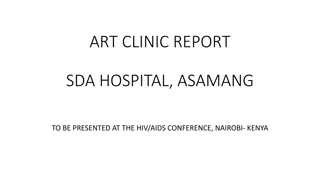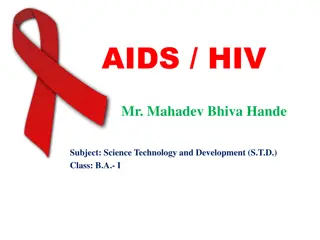HIV/AIDS: Differentiating Between the Virus and the Final Stage
HIV and AIDS are terms often used interchangeably, but they refer to distinct stages of the same disease. HIV is the virus itself, while AIDS signifies the advanced stage of HIV infection. Learn about how HIV is transmitted, its origins, symptoms, and the specific immune cells it affects. Understanding these distinctions is crucial in educating oneself and others about this important health issue.
Download Presentation

Please find below an Image/Link to download the presentation.
The content on the website is provided AS IS for your information and personal use only. It may not be sold, licensed, or shared on other websites without obtaining consent from the author.If you encounter any issues during the download, it is possible that the publisher has removed the file from their server.
You are allowed to download the files provided on this website for personal or commercial use, subject to the condition that they are used lawfully. All files are the property of their respective owners.
The content on the website is provided AS IS for your information and personal use only. It may not be sold, licensed, or shared on other websites without obtaining consent from the author.
E N D
Presentation Transcript
HIV/AIDS HIV/AIDS Vianca Rivera HPA 310 Final Project
Does HIV mean Someone has AIDS? The terms HIV and AIDS can be confusing because both terms refer to the same disease. - HIV refers to the virus itself. - AIDs refers to the final stage of HIV infection.
What HIV/AIDS Stands For ? HIV stands for human immunodeficiency virus. -If its untreated it can lead to AIDS AIDS stands for acquire immunodeficiency syndrome. - NOT everyone with HIV advances to this stage.
How HIV or AIDS are Transmitted ? You can get HIV through: -Unprotected sex - sharing drug injection needles - childbirth (blood, amniotic fluid) - breast feeding ( breast milk) - occupational exposure - blood transfusions / organ transplant It is not transmitted by air or water or casual contact. It does not live long outside the body
Where does HIV/AIDS come from ? Scientists identified a type of chimpanzee in West Africa as the source of HIV infection in humans. They believe that the chimpanzee version of the immunodeficiency virus (called simian immunodeficiency virus, or SIV) most likely was transmitted to humans and mutated into HIV when humans hunted these chimpanzees for meat and came into contact with their infected blood. Studies show that HIV may have jumped from apes to humans as far back as the late 1800s. Over decades, the virus slowly spread across Africa and later into other parts of the world. Its known that the virus has existed in the United States since at least the mid- to late 1970s.
SYMPTOMS OF HIV Early stage Within 2-4 weeks after HIV infection, many, but not all, people experience flu-like symptoms, often described as the worst flu ever. This is called acute retroviral syndrome (ARS) and it s the body s natural response to the HIV infection. Symptoms can include: Fever (this is the most common symptom) Swollen glands Sore throat Rash Fatigue Muscle and joint aches and pain Headache * Symptoms can last anywhere from a few days to several weeks.
Cells affected HIV affects specific cells in the immune system called : CD4 or T cells https://youtu.be/ng22Ucr33aw
TREATMENTS It is NOT curable Antiretroviral Treatment will help individual live a longer life and reduce transmitting the virus to others.
Resources http://www.medicalnewstoday.com/articles/3 02724.php https://www.aids.gov/hiv-aids-basics/
